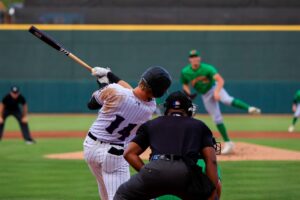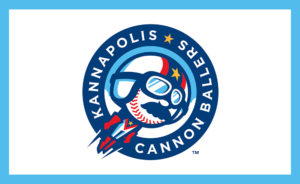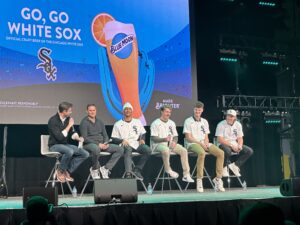Go West, Future Sox
The American southwest is a bizarre place. You may already know this; I first figured it out eight years ago, during my first spring training foray into Arizona. It’s a land with a Jack-in-the-Box on every corner, a traveling carnival in every parking lot, and so much baseball it can sometimes feel like you’ve descended into the personal hell of someone who really, really hates team sports.
Luckily for everyone, that person is not me. I wrapped up my third trip to White Sox spring training in mid-March, and let me tell you, if you enjoy the game of baseball, you owe it to yourself to make it out to Arizona. Especially if you’re in the Midwest: the first time you step off a plane into 60-degree night air after boarding three hours earlier in sub-zero temperatures really stays with you.
Not only that, there’s an endless amount of activity. Sure, baseball is packed into every single day from sunrise until after sunset, so spring training could take place in the middle of the desert for all I… wait.
In reality, deserts get a bad rap. Deserts are beautiful, strange, and full of mirages, much like minor league baseball. They’re also only warm during the day.
In three trips to Arizona, spread over eight years, I have managed to fit in around baseball one visit to Sedona, one visit to the Grand Canyon, numerous In-N-Out Burger stops, one Paul McCartney concert, one Lorde concert, an hour at the Sky Harbor car rental pickup desk at 2 a.m., Saguaro National Park, a spooky parking lot carnival, and very little sleep. There’s a military base nearby, so seeing fighter jets screaming silently overhead is a common occurrence. There’s a museum exhibit about Pompeii, with the curiously perky tagline, “Experience the city nature destroyed… but also preserved!”
It’s not all just baseball, is what I’m trying to say here. Inasmuch as anything can be not just baseball, it’s not. And the accoutrements around spring training are part of what makes it so magical. They fuel the otherworldly atmosphere; they make it more special than it already was. It’s like stepping into Murphy’s parallel world where anything that can happen does, of course Bernie Sanders is tweeting from somewhere in the complex, of course Sir Paul is playing down the road in an hour and a half, of course that’s Harold Baines morosely gliding through the automatic doors at the CVS. It’s spring training in Arizona. It’s the middle of the desert and there’s a high concentration of weird.
And, of course, there are also outlets of normalcy. There’s nothing strange about relaxing in the sun to the sound of batting practice or seeing a guy fly out to left field. Baseball is the reason for the chaos, but it’s also the grounding point to reality.
Camelback Ranch, shared by the Dodgers and White Sox, is free and open to the public starting at 9 a.m. almost every day. Our very first morning this time around, we were lied to by the security guard at the gate, who told us that nothing was happening, the major leaguers had already headed off to Mesa to play the Cubs, a game to which we had done ourselves the favor of not getting tickets.
There is always something happening. In Arizona, at spring training, there is always something happening.

That day, the something was normal minor league workouts on the White Sox backfields (routine but still fascinating to watch!) and, later, a game between Dodgers minor leaguers and the baseball team from Meiji University, one of Japan’s top colleges. For whatever reason, the Dodgers’ side of the minor league complex is much more accessible than the Sox side of things, so we were able to walk right up to the backstop and watch Pete O’Brien and a cast of thousands hone their craft. Bruce Chen was there. Ramon Troncoso was sighted. An old guy in Dodgers gear came up to us to talk about seeing Clemente, whose shirt I was wearing, and how nobody has ever been better in right field. It’s easy to start conversations with strangers at spring training, because everyone there has at least one thing in common. You also tend to see the same people over and over, so inevitably you bond over how insane you both must be, to be watching guys who will never make it past low-A put in their reps at 9:30 a.m. on Saturday.
The White Sox minor league system is clustered in North Carolina, with other affiliates in Montana, Arizona, Alabama, and the Dominican Republic. In spring training, this is condensed down to four fields, and they form a clover at Camelback, home plates converging at the center. There’s just enough space in the middle for an observation tower for coaches and four small bleachers, one facing each field. Virtually every prospect in the entire system (or at least those who will play in the U.S. that year) is on one of these four fields, which in turn means that to see them all you have to constantly be on the move. Choices have to be made. Do you want to see Blake Rutherford hit or Zach Collins? Ian Clarkin is warming up out by the low-A left field, but Nate Jones is getting some extra work in on the AAA field, and Omar Vizquel is hitting fungoes for Bryant Flete over by A+.

It’s best to circle like a shark (or a rabid animal). Pick clockwise or counter-clockwise and stick to it. Blood in the water here is Eloy Jimenez on deck. Guess what? You, too, can watch him hit a dong out into the wash beyond left field, surrounded by nobody else but minor leaguers and maybe ten other fans. (The inimitable FutureSox Arizona correspondent Kim Contreras will probably be there taking photos and dropping knowledge. Another cool thing about spring training is you have the chance to meet people whose words you’ve only ever read online, something which can have dubious outcomes but in this case went very well!)
The one major downside to So Much Baseball is that there is, in fact, so much baseball that it will inevitably overlap. One day we had to split time between simultaneous AAA/AA games and a Carson Fulmer big league start. Another day we skipped out on the major league game altogether to watch the high minor leagues. It’s next-level FOMO and is very unfair to me personally.

You don’t have to pay to for a single game at Camelback Ranch in order to soak it all in and see some good baseball in the meantime, since all minor league games are free, but going to the actual stadium is also an experience. Of all the spring training ballparks I’ve been to, Camelback Ranch is the best, and that’s not just fan bias! Other parks charge for parking, have cramped seating, narrow concourses, outdated scoreboards. Camelback Ranch has and does none of these things. It’s an absolutely beautiful modern stadium. Also, Eloy Jimenez hit a home run out of it.
Anyway, now I’m back on the East Coast, where it’s supposed to snow twice in the next ten days (in retrospect, spring training does a poor job of preparing you for spring). Look for a post next week about the actual, you know, baseball players I saw. In the meantime, it’s never too early to book plane tickets.
Want to know right away when we publish a new article? Type your email address in the box on the right-side bar (or at the bottom, if on a mobile device) and click the “create subscription” button. Our list is completely spam free, and you can opt out at any time.




